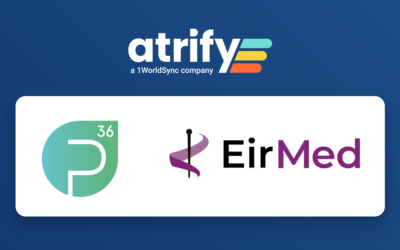Why use a Data Dictionary?
A successful business requires well structured, high qualified product content to maintain consistent data across all channels and sustain brand integrity. This is needed because exceptional content, whether it be online or in-store, has proven to improve conversion rate and sales growth. However, bridging in-store and online product content can be challenging at times due to multiple fragmented solutions and disconnected requirements.
Leveraging atrify will ensure that your product content remains both consistent and tailored to the needs of your recipient. In order to prepare an efficient data exchange between your data sources and targets, your product content needs to be analyzed, structured and documented in an accurate manner.
Why exchange data?
Many recipients have different requirements for data content and formats; it is important to recognise what the differences and/or overlaps are.
A data dictionary can help you meet these requirements, ideally before (but also during or after) the implementation of a solution. Such a dictionary also supports your Product Content Management processes. Other terms for the Data Dictionary include product data dictionary, mapping, specification, profile, etc.
How to structure a Data Dictionary?
The following topics are recommended to be part of a data dictionary:
Read me
- overview information e.g. company name, related system, version number
- legend of the tab names, their columns and colors
- in order to reference all following items, all attributes, valid values or validation rules should be provided with a key ID.
Attributes
- what information? business name, business definition, etc.
- which source or recipient? who is responsible (internal owner) and related systems?
- include all attribute metadata e.g. attribute type, unit of measure, no. of characters
- their source and/or target mappings i.e. GDSN code
Valid values
- for attributes with single or multi select (codelists)
- includeing codelist name, code ID and descriptions - if necessary- in different languages
- optionally complex or hierarchical codelists like business area (1st level), brand name (2nd level), series name (3rd level)
- brand owner name and its GLN
- their source and/or target mappings i.e. GDSN code
Validation rules (optional)
- what are the business rules?
- requiredness: mandatory/ optional
- other conditions under which the attributes are
- reference to attributes or valid values
How to create a Data Dictionary?
Start by answering the following questions:
- What information? Collect all product-related attributes and code lists of your company. Find the internal attribute name and a business definition. What is the benefit and need?
- Which stakeholders? Survey of all internal and external data suppliers and data recipients. Distinguish between sources and targets.
- Which governance process between attributes/data and stakeholders should be defined? Clarification of the internal owner and the related systems that are to be distinguished between the actual and target states.
- What metadata? Analyze all metadata and structures of the individual attributes and their valid values. Typical: data type, size, (repeatable) grouping, multiple selection, unit of measure, language dependency or code names and their definitions.
- How does it work technically? Assign each attribute and valid value to the source and target systems. Distinguish between mappings, transformations and derivations.
- Which quality rules apply? Find your data quality related business rules and translate them into technical validations. Is the attribute mandatory in general or per product class? Or can it be left optional or removed completely?
Discover atrify Services Experts for Product Content Management
With more than 20,000 global users in over 50 countries, atrify understands that trusted data and data quality are essential wherever you do business.
atrify's Professional Services team can help you deliver a comprehensive data dictionary. Part of this is conducting an assessment to answer the basic questions. Another part of the delivery is the attribute analysis itself to map your data needs into a data dictionary.




